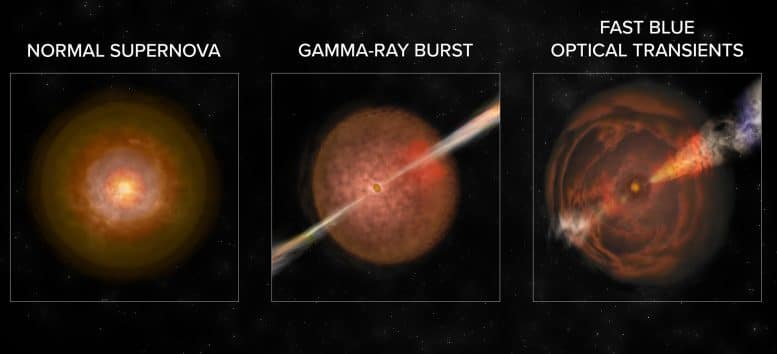Freedom from fear
Undoubtedly, the fear of death and the retribution that follows in life after it is a kind of faith, but purely medieval in nature. The painters then depicted the Last Judgment, the flames of hell, the devils who torment sinners and kidnap them with a satanic giggle in the underworld.
In the Middle Ages, the religion of the majority (not the holy fathers of the Church) was based on the fear of post-mortem and even lifelong punishment. “Fear created the gods,” exclaims a Roman poet, and he was right in his own way, because he did not mean God but pagan deities. From the pagans this fear was inherited by Christians, especially those whose faith did not rely on the Gospel of Christ, but on the natural desire of men to insure themselves in the face of an incomprehensible and generally hostile world, where everyone is threatened with trouble and danger. .
In the eighteenth and nineteenth centuries, under the influence of rapidly evolving natural religions and as a result of people’s awareness of their human rights and the need to reject their slavery in social terms, this fear began to subside. Thus the man, already freed from fear (which is joyful, because fear is slavery, oppression and confinement, and our Lord calls us to freedom), at the same time begins to lose his faith (which is the trouble!), Precisely because this belief was mixed with purely pagan fear. The fear brought into the temples in the 4th century by those nominal Christians of whom Blaz speaks. Augustine, people who were baptized and accepted the appearance of Christians, but remained pagans in their innermost being.
From here in the West appears the French atheism of the era of Voltaire, Diderot and D’Alembert, and in the East – the Russian atheism of Pisarev, Dobrolyubov and others.
People who felt free from the fear of punishment and drove God out of their lives. The tragedy of the people of that time, among whom were brilliant thinkers, scholars and poets, was that they renounced God at the moment when they had the wonderful opportunity to feel Him, to rediscover Him for themselves and for the future. Along with the medieval prejudices that were inevitably to be abandoned (and thank God, for the most part, they have already been overcome), humanity has lost faith in God. It was as the saying goes: “Along with the water from the trough, the child was thrown out” – only this child turned out to be the Infant born in Bethlehem.
When children are brought up in fear of God (in the sense that He will punish them if they sin), at some point in their lives they will experience the same thing that happened in the time of D. Diderot with our entire civilization. They will stop being afraid, they will become atheists, and they will give up all morality. J.-P. Sartre describes how in his childhood, playing with matches, he burned a carpet. At first he waited for the All-Seeing God to punish him, and then, when no punishment followed, he realized that he did not need to fear God, so – “everything is allowed”. Thus, in the heart of the future existentialist philosopher, unbelief sprouted for the first time.
Three ways to God
Even the ancient fathers said that three paths lead to God: the slave, the mercenary and the son. When one abstains from sin only out of fear of hellish torment, this is the path of the slave who is guided by fear of punishment. The mercenary’s path is connected with the desire to earn some reward.
If one even performs feats out of a desire to be like the Kingdom of heaven, the holy fathers call his work mercenary. God wants us to take the path of sonship, that is, out of love and zeal for Him, to act honestly and enjoy the saving union with Him in our souls and hearts. In the past, all three paths probably led to God, but at the end of the twentieth century it became clear that the first and second are dead-end roads, because walking on them only leads to a nervous breakdown, destroying ourselves and many people around. us.
However, we ourselves are still afraid of each other that God will punish us for something. “God punished him” – we say about someone to whom something happened when we think he deserved punishment for something. In fact, we fear God as the Greeks fear Zeus, the Egyptians fear Amon, and the Romans fear Jupiter. At the same time, we do not even notice how we become pagans ourselves.
And yet, you can not do without the fear of God! This expression is found many times in the Bible, which is not accidental. We just need to understand what this fear is, which teaches us wisdom (Prov. 15:33), protects us from evil (Prov. 16: 6) and leads us to life (Prov. 19:23); he is pure (Ps. 18:10) and, among other things, is to hate evil (Proverbs 8:13). This is not a fear of God and it is not a fear of possible punishment. God does not persecute us, but we could too easily hurt Him with our disobedience.
Some children are afraid of their mother scolding him, but something else is afraid of upsetting or upsetting her. This is the difference between human fears of something dangerous and the fear of God, which for us is the most precious of all treasures.
Since the 1990s, we have seen some angry Orthodox young people, for whom religion is associated primarily with fear of the Typikon, the Statute – lest they break the fast or commit some sin, gloomy, harsh, even the outward behavior of which is monastic. I’m afraid they haven’t chosen the path of slavery for themselves. It is understandable why – during the totalitarian regime we were slaves for a long time and now it is difficult, even almost impossible, to get rid of slave psychology. But it is necessary so that one day we do not lose our faith, like our great-grandparents who renounced God because they saw in God lack of freedom. By renouncing God through their minds, they stretched out their hearts to Him; rejecting non-freedom, they sought God, only they did not know that the One they needed so much, the one they lacked, was He and not someone else.
Servants of God
Believing that we go to church only for fear of punishment, unbelievers think that religiosity humiliates man, suppresses his “I” and makes us slaves in general. This is true if we see in the fear of God only the fear of punishment or retribution. Those who understand our faith in this way darken and become slaves to religion. When we understand the true nature of the Lord’s fear, our faith inspires us, opens before us new opportunities and new horizons, gives us new strength. It is in Christianity that the impossible becomes possible. According to Jesus the Savior, this is impossible for men, but not for God; for with God all things are possible” (Mark 10:27).
In connection with the above, it is appropriate to recall the meaning of the Hebrew word for “servant of the Lord” (Ebed Yahweh). “Ev(b)ed” means a servant or co-worker of God and at the same time a child, ie a child who has grown up, but not quite. We can treat him like an adult, even though we still have to look after him and take care of him – that’s what a “servant of God” is!
Christianity begins with kneeling! These words, no matter how important and true the thesis behind them in the eyes of the Orthodox Christian, arouse bewilderment in people who know nothing about Christianity, worship, the mystical experience in Orthodoxy. For a person who knows nothing about Christianity from the inside, but only about the outside, this phrase depicts a man crushed by religious dogma or a slave kneeling before the icon in the dark temple.
Yes, this is how the Christian kneeling, viewed from the side, is understood. In fact, it expresses not slavish dependence, obedience or fear, but a radically different feeling – enthusiasm: “How many are Your works, Lord! You have done all things wisely” (Ps. 103: 24). The same feeling is astonishingly accurate in the prokimena of the Sabbath evening: “The Lord has reigned, he has put on beauty” and other liturgical texts.
This feeling has been experienced by every doctor who has seen a hopelessly ill child recover; from every mother who met her son alive from war; and, after all, from every child who finds on the morning of his birthday a toy or gift he has long dreamed of. And love, and gratitude, and happiness, and a sense of His presence with us, in general – fullness, this is it, our kneeling, nothing else; in any case, not fear. “We have known the love that God has for us, and we have believed in it … There is no fear in love, but perfect love casts out fear” (1 John 4: 16-18).
Theology of fear
However, religion based on fear is still attractive to some. Today, old books are indiscriminately republished, conductors of this theology of fear. It would be normal to assume that interested groups and forces give instructions for photo type editions of such books in order to instill in the Orthodox people an atmosphere of fear, slavish obedience, obedience, while aiming to weaken the Church’s influence among the people, to the discredit it in the eyes of the population, etc. Often these publications are the result of the efforts of honest people, without any malicious intentions – the trouble is that their publishers, like us sometimes, prefer the position of slaves instead of Son-ship.
The use of religion as a tool is becoming a tragedy for all. And for the people, and for those who use it, and for religion itself. This led first to the cultivation of absolute religious indifference, then to an explosion of ungodliness, and finally to the emergence of new denominations and new religions. Thus a new religion in the late twentieth century became Marxism, which took in the hearts of many people, no matter good or bad, the place of God, expelled from there by the obligation of fasting, confession and the atmosphere of fear fueled by some to this day.
Most of us grew up in the age of slavery and we were slaves from diapers, and at the age of 3-4 we realized the universality of this fact. We are so accustomed to our slavish role that on the way to God we also choose to be slaves (instead of slaves). The Jews in the wilderness saw Moses as an enemy precisely because he freed them from bondage (Exodus 16: 2-3). We also consider the enemy to be the one who reminds us that we are called to freedom (Gal. 5:13), just because we are used to lack of freedom and it is psychologically closer to us.
It is this lack of freedom that stiffens our hearts that prevents us from feeling Jesus and seeing in the Church only commandments, ordinances, prohibitions, and not feeling His burning presence and the joy that Church writers have witnessed.
In Soviet times, children were taught knowledge in schools, oriented to facts, developed their memory. They were taught to read fast, and they had to be taught slowly but thoroughly. No one developed their feelings. And today, coming to the Church, they again want to learn everything about God, about the truth, about the Orthodox faith. And they do not understand that in this area the main thing is not so much knowledge, but feelings. The orientation to knowledge makes us inanimate, and combined with the slavish psyche it makes us slaves to our own mind and its limited possibilities, which is why we are not able to immerse ourselves in God as in the ocean, as described by the holy fathers.
We are constantly and everywhere looking for enemies, we check our faith according to the canons as students, checking the answers to the tasks in the textbook; we threaten each other with God, seeing in Him perhaps a good but slaveholder and ourselves slaves. It seems to us that everything around us is bad and terrible, as bad as ever. That is why we still do not have the strength to exclaim together with Archbishop John (Shakhovsky): “The earth is shrouded in the dust of the Lord’s love.” And this is completely true.
Source: Fr. Georgy Chistyakov – Russian Thought Magazine, 1996 (in Russian).
Note: Father Georgy Chistyakov was a theologian, philologist and historian. Parish was a priest in the Moscow church “St. Kozma and Damyan” and the head of the church “Protection of the Mother of God” in the Children’s Republican Clinical Hospital. Member of the Board of the Russian Bible Society and the International Association for the Study of the Church Fathers, Rector of the Public Free University, founded by Fr. Alexander Maine, Head of the Department of Cultural History at the Moscow Institute of Physics and Technology. Since 1995 he has been lecturing on the history of Christianity and theological thought.
The fear of punishment is central to the religiosity of many people today. In the days of state atheism, there was a belief that believers professed God only to avoid the torments of hell. It was as a fear of the hellish torments prepared for sinners in the afterlife that the Orthodox faith was presented by the atheistic propaganda, to which we must acknowledge the high professionalism in this direction.
















